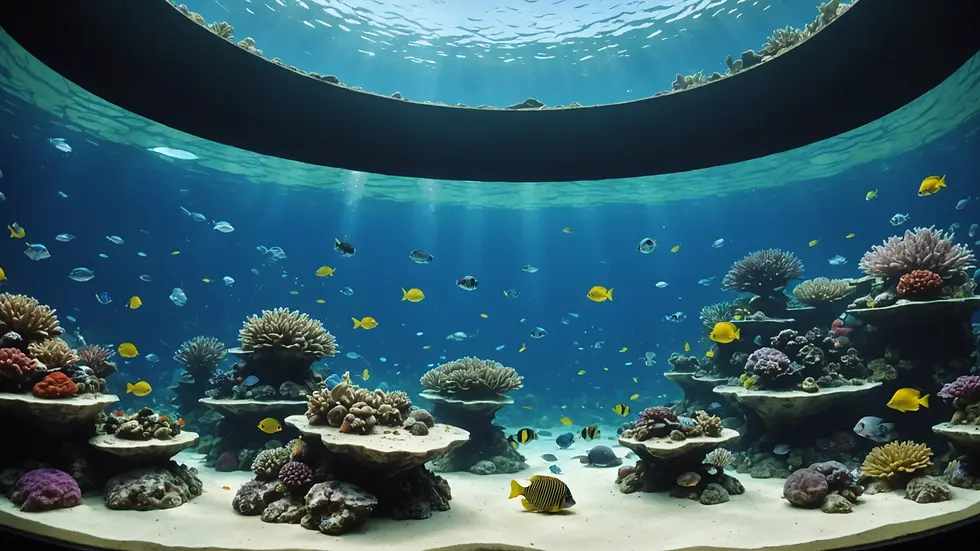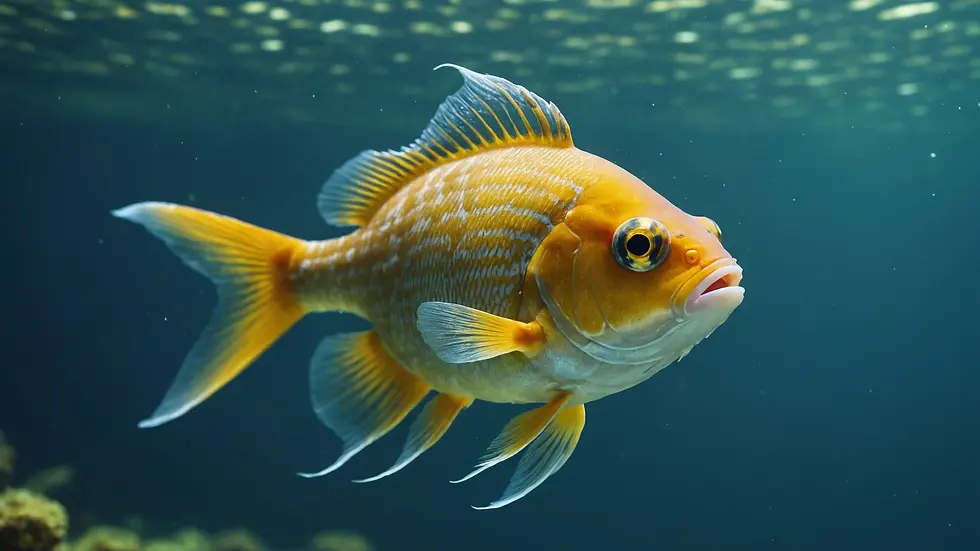Exploring the Unseen: Understanding Common Swimming Issues in Fish
- Jyotiraj Borah
- Feb 7
- 4 min read
Understanding the health of aquarium fish is crucial for every fish owner. One often overlooked aspect of fish care is their swimming behavior. Fish are more than just lively décor in your tank; they are living beings that need to swim efficiently for their health. Disruption in their swimming patterns can indicate serious underlying issues. In this blog post, we will examine common swimming problems in fish, their potential causes, and practical solutions.
Signs of Healthy Swimming
Before we dive into various swimming problems fish may experience, let’s identify what normal, healthy swimming looks like. A healthy fish typically shows the following traits:
Smooth, fluid movements that indicate good muscle coordination.
Ability to maintain a consistent position without excessive effort or strain.
Active exploration of tank decor, signaling curiosity and comfort.
Normal posture with fins spread out, which shows good health.
Recognizing these signs helps fish owners act swiftly when something goes wrong.
Common Swimming Problems in Fish
Fish can face numerous swimming problems, each indicating different stressors or illnesses. Let’s explore some of the most common issues:
1. Suspended Swimming
Suspended swimming is when fish remain motionless, often near the water's surface or the bottom. This behavior can stem from:
Stress: Rapid changes in water conditions, like pH shifts exceeding 0.5 units in a short period, can create acute stress.
Disease: Conditions such as swim bladder disease can severely impact buoyancy, with studies showing up to 30% of fish can be affected by this condition in poorly managed aquariums.
Solutions
To minimize suspended swimming, maintain stable water conditions, including temperature (ideally between 74°F and 78°F), pH (between 6.5 and 7.5), and ammonia levels (ideally zero). If disease is suspected, isolate the affected fish and consider treatment options like medication.

2. Erratic Swimming
Erratic swimming is marked by jerky, chaotic movements. Common causes include:
Overcrowded Tanks: For example, a 20-gallon tank housing 15 fish instead of the recommended 10 can cause significant anxiety.
Poor Water Quality: High levels of ammonia or nitrite can elevate stress levels and disrupt a fish's nervous system.
Solutions
Regular tank maintenance is vital. Aim to perform partial water changes (about 20%-30% weekly) to keep water clean. Testing your water parameters at least once a week can help catch potential issues early. Altering the tank layout to create more swimming space may also reduce stress.

3. Spiraling
Spiraling refers to fish swimming in circles, often indicative of serious health issues:
Neurological Problems: Parasitic infections can affect brain function, leading to spiraling.
Swim Bladder Issues: If a fish loses its balance, it may swim in circles due to a malfunctioning swim bladder.
Solutions
Pay close attention to your fish's species-specific behaviors. Consult a veterinarian experienced in fish care for a proper diagnosis and treatment plan.

4. Bottom Sitting
When fish often rest at the bottom of the tank, it signals possible health issues:
Insufficient Oxygen: Lethargy can occur when oxygen levels drop below 5 mg/L.
Illness: Bacterial infections can lead to decreased movement, with affected fish spending more time on the bottom.
Solutions
Ensure proper aeration in the tank. A good air pump can increase oxygen levels, which is vital for the fish's well-being.
5. Swimming in Place
Fish that seem to hover while actively moving their fins may show:
Stress or Fear: Environmental changes or the presence of tank mates can lead to this response.
Physical Obstructions: Objects too close can prevent fish from swimming freely.
Solutions
Reassess the tank setup and remove any stressors. Create secluded areas with plants or decorations to help fish feel secure.
6. Leaping
Leaping or jumping is common in certain fish but can be harmful if excessive:
Poor Water Conditions: High nitrate levels can trigger this behavior, with fish often leaping to escape discomfort.
Boredom: Lack of stimulation or space can lead to more frequent jumping.
Solutions
Maintain water quality with regular tests and changes. Adding plants or decorations can provide stimulation, reducing jumping incidents.
7. Floating Upside Down
Floating upside down is alarming and typically indicates severe problems:
Swim Bladder Disease: A affected swim bladder may cause improper buoyancy.
Internal Infections: Fish may float awkwardly due to infections affecting overall health.
Solutions
If the condition persists, consult an aquarist to determine an appropriate treatment plan. This may include dietary adjustments or medication.
Prevention is Key
Preventing swimming issues in fish is always better than dealing with them later. Here are some effective strategies:
Regular Water Testing: Test water parameters weekly to maintain optimal conditions.
Stable Tank Environment: Avoid sudden changes in temperature or water chemistry.
Proper Dieting: Offer a balanced and species-specific diet to support overall fish health.
Limit Stocking Levels: Prevent overcrowding to reduce stress and promote good water quality.
Maintaining a Healthy Aquarium
Addressing swimming issues in fish is essential for a thriving aquarium. From recognizing the signs of healthy swimming to managing specific behaviors like erratic swimming or bottom-sitting, knowledge is power. By observing fish behavior and maintaining optimal conditions, you can create a supportive environment conducive to their health and happiness. Caring for fish offers not just aesthetic pleasure but also a rewarding bond with nature.




Comments